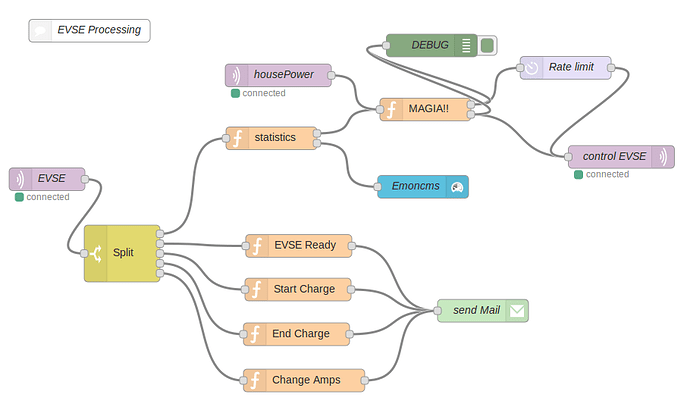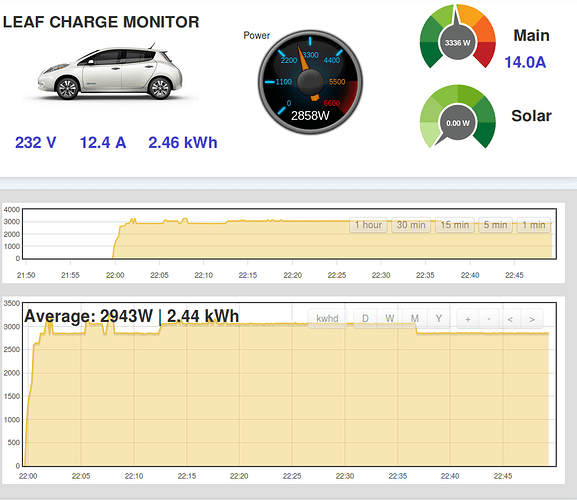follow up from here: Diverting Solar to Charge an Electric Car | Archived Forum
Hi, let me join the fun and present my implementation of electric car energy management system:
It basically revolves around this Node-Red scheme and a custom made EVSE built with a ESP8266:
So after my EVSE is turned on, it connects t my home wifi, connects to the MQTT broker and sends a “EVSE Ready” message that is relayed to my mailbox to let me know it’s alive.
After that I can connect to the EVSE using a browser and determine the charge mode – Manual – Power – Solar.

- Manual does nothing,
- Power optimizes the power delivered to the car according to the remaining power available.
- Solar doesn’t allow negative power (injection), but always charges the car at a absolute minimum of 6A.
It is impossible to charge at lower power so I might as well keep the car charging jut to avoid injection of energy. I have a Nissan Leaf, and fortunately it’s not as unefficient as the Zoe.
When a charge starts, a new message is sent from the EVSE, captured by Node-RED and sent to my email. Aditionally the EVSE starts to send every 10 seconds all the statistics to MQTT. NODE-RED captures that and posts the data to emoncms.
This data is further processed in “MAGIA!!” function that, along with the total house consumption, determines if the EVSE needs to adjust the charging amps. If the power is above the contracted rate it will immediately slow down the charge. If there is margin to increase the charge amps it will be throttled to 1 change per minute.
From my experience i find the Power mode to be the most interesting. I can charge the car at peak usage times, like lunch or dinner at a about 25Amps. My contracted power is 30Amps and the leaf can go as high as 29 amps. The Solar diverter keeps the car charging slowly and cannot be more precise than 1amp. Still it works at preventing injecting surplus energy to the grid.
Let me know what you think.
PS: moderators, can you please help transforming the links into images. I , as a “new” user, couldn’t post more than 1 image and more than 2 links…
BR
Edit - attached images to post per OP’s request. BT- moderator


